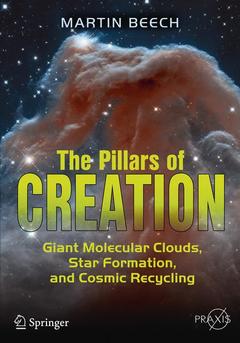Description
The Pillars of Creation, 1st ed. 2017
Giant Molecular Clouds, Star Formation, and Cosmic Recycling
Popular Astronomy Series
Author: Beech Martin
Language: English
Subjects for The Pillars of Creation:
Support: Print on demand
Description
/li>Contents
/li>Biography
/li>Comment
/li>
This book explores the mechanics of star formation, the process by which matter pulls together and creates new structures. Written for science enthusiasts, the author presents an accessible explanation of how stars are born from the interstellar medium and giant molecular clouds. Stars produce the chemicals that lead to life, and it is they that have enabled the conditions for planets to form and life to emerge.
Although the Big Bang provided the spark of initiation, the primordial universe that it sired was born hopelessly sterile. It is only through the continued recycling of the interstellar medium, star formation, and stellar evolution that the universe has been animated beyond a chaotic mess of elementary atomic particles, radiation, dark matter, dark energy, and expanding spacetime. Using the Milky Way and the Eagle Nebula in particular as case studies, Beech follows every step of this amazing process.

